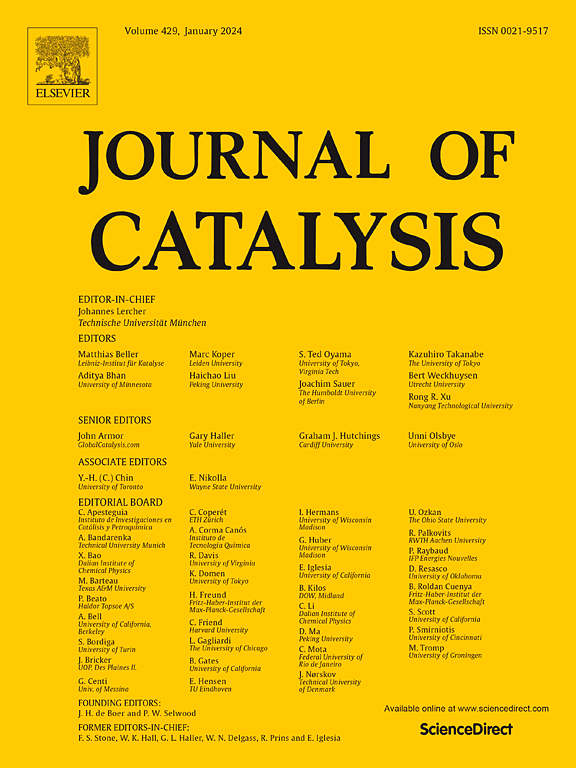Visible light-induced catalytic syntheses of thioamides as biomass-based corrosion inhibitors for mild steel
IF 6.5
1区 化学
Q2 CHEMISTRY, PHYSICAL
引用次数: 0
Abstract
It is a pioneering field for biomass valorization to construct high-efficient corrosion inhibitors for metal due to a big challenge and serious issue of metal corrosion during its industrial applications. Herein, we describe a visible light-induced three-component coupling of furfural, furylamine and (NH4)2S for biomass-based thioamide synthesis under mild conditions. The photo-catalyst for the coupling is well designed as Ni immobilized on a carbon-TiO2 nanocomposite (Ni/C-TiO2) with in-situ photo-generated hole (h+) and hydroxyl radical (·OH) as key oxidative species for thioamide formation. The photo-catalytic system is applicable to a variety of furfural-derived thioamides (20 examples). The anti-corrosive activities of typical thioamides are systematically investigated and compared with mild steel in 1.0 M HCl solution. Electron-rich furan ring (π-electrons system) with functional −NH−C(=S)− group (high electronic density of heteroatoms) endows these biomass-based thioamides high inhibition efficiencies towards the mild steel as mixed-type corrosion inhibitors for both cathode and anode.


可见光诱导合成硫酰胺作为生物质基低碳钢缓蚀剂的研究
构建高效金属缓蚀剂是生物质能增值的一个前沿领域,因为金属在工业应用中面临着巨大的挑战和严峻的问题。在此,我们描述了可见光诱导的糠醛、糠胺和(NH4)2S的三组分偶联在温和条件下合成生物质基硫酰胺。该偶联反应的光催化剂设计为Ni固定在碳- tio2纳米复合材料(Ni/C-TiO2)上,并以原位光生成空穴(h+)和羟基自由基(·OH)作为硫酰胺形成的关键氧化物质。该光催化体系适用于多种糠醛衍生的硫酰胺(20个示例)。系统地研究了典型硫酰胺在1.0 M HCl溶液中的防腐性能,并与低碳钢进行了比较。富电子呋喃环(π-电子体系)具有功能 − NH − C(=S) − 基团(杂原子的高电子密度),使得这些生物质基硫酰胺对低碳钢具有较高的缓蚀效率,可作为阴极和阳极的混合型缓蚀剂。
本文章由计算机程序翻译,如有差异,请以英文原文为准。
求助全文
约1分钟内获得全文
求助全文
来源期刊

Journal of Catalysis
工程技术-工程:化工
CiteScore
12.30
自引率
5.50%
发文量
447
审稿时长
31 days
期刊介绍:
The Journal of Catalysis publishes scholarly articles on both heterogeneous and homogeneous catalysis, covering a wide range of chemical transformations. These include various types of catalysis, such as those mediated by photons, plasmons, and electrons. The focus of the studies is to understand the relationship between catalytic function and the underlying chemical properties of surfaces and metal complexes.
The articles in the journal offer innovative concepts and explore the synthesis and kinetics of inorganic solids and homogeneous complexes. Furthermore, they discuss spectroscopic techniques for characterizing catalysts, investigate the interaction of probes and reacting species with catalysts, and employ theoretical methods.
The research presented in the journal should have direct relevance to the field of catalytic processes, addressing either fundamental aspects or applications of catalysis.
 求助内容:
求助内容: 应助结果提醒方式:
应助结果提醒方式:


